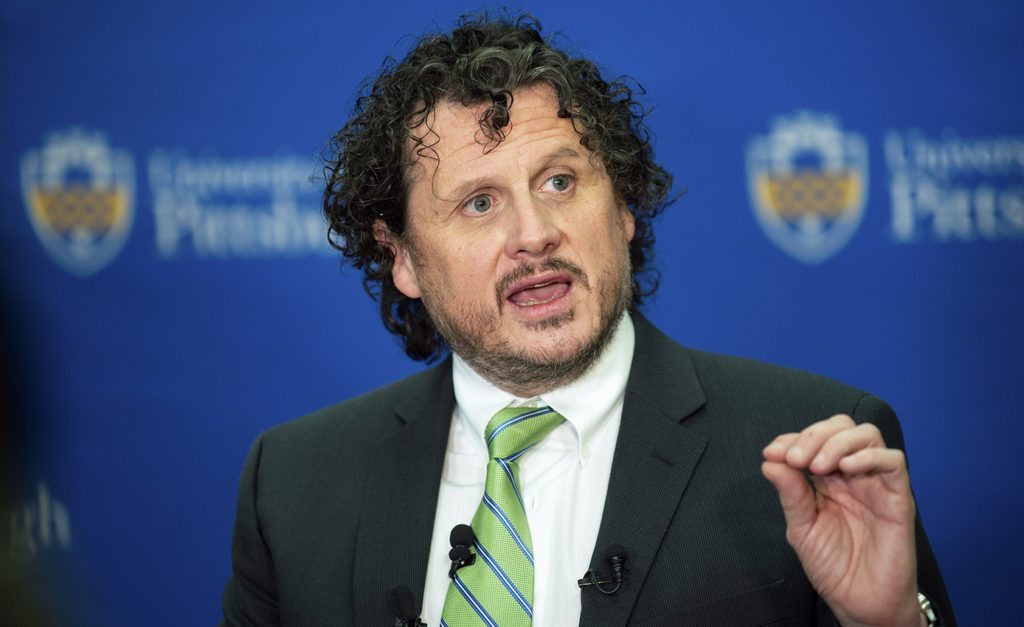Coronavirus Update: Pitt Joins the Search for a Vaccine
University’s vaccine center studying live samples of the virus; air cargo industry struggles with outbreak
By Matt Neistein
Published February 24, 2020
Read Time: 3 mins
AS THE WORLD CONTINUES TO GRAPPLE with the spread of the novel coronavirus that has killed more than 2,000 people and sickened 75,000 more, Pittsburgh finds itself as a leading beacon in the race to find a vaccine to prevent the disease.
The University of Pittsburgh’s Center for Vaccine Research has received a live sample of the virus designated SARS-CoV-2, according to the university. The sample came from the U.S. Centers for Disease Control and Prevention, which has confirmed several dozen cases of infection in the U.S., the majority in people who contracted it abroad and were brought back under quarantine.
“At Pitt, we have a long history of studying viral and bacterial diseases – and addressing emerging and reemerging infections,” center director W. Paul Duprex told the university’s Senate Council. “We no longer have to deal with the poliovirus because a vaccine was developed here. Jonas Salk is part of the fabric of our city.”
The center’s Regional Biocontainment Laboratory is one of only a few labs across the U.S. equipped to handle highly pathogenic infectious viruses like SARS-CoV-2.

Dr. W. Paul Duprex, director of the University of Pittsburgh Center for Vaccine Research, addresses Pitt’s Faculty Senate. (Submitted by University of Pittsburgh)
However, Duprex cautioned against expecting a speedy solution.
“We have the experience at Pitt to contribute to this,” he said. “The one challenge with vaccines is that the development process is not fast. When you’re vaccinating people, the safety of the vaccine being administered is paramount.”
AIRPORTS AND AIRPLANES BECAME FOCAL POINTS very quickly during viral outbreaks, and the coronavirus has proven no different since it was identified in the Chinese city of Wuhan in December.
While not currently directly affected by the COVID-19 disease, Pittsburgh International Airport remains in communication with the CDC, Customs and Border Protection and the Allegheny County Health Department. Officials are ready to implement an action plan as necessary.
The U.S. is one of several countries that has restricted travel to and from China since the outbreak began, diverting flights originating there or containing passengers who have recently been to China to one of 11 domestic airports with CDC quarantine stations for passenger screening. The screenings are part of a comprehensive federal response to the outbreak, which includes stringent travel limitations between the U.S. and China.
THE OUTBREAK IS AFFECTING INTERNATIONAL CARGO transportation for U.S. businesses and consumers, and logistics services are scrambling to adjust.
UPS and FedEx have both reached agreements with employees working cargo flights that allow them to voluntarily decline working on routes to and from China. The FedEx pilots union has established its own team to address the outbreak and its effect on members.
Measures to contain the virus in China have slowed the country’s productivity, and for the first time in decades, inbound cargo traffic to the world’s most populous nation has surpassed outbound traffic, FreightWaves reported.
The shift has caused charter rates to skyrocket, particularly because belly cargo capacity has dropped as passenger flights to and from China have been suspended amid the outbreak, according to the Journal of Commerce.
On Friday, the International Air Transport Association announced its analysis of the virus’ dampening effect on passenger demand would result in a nearly $30 billion loss for carriers worldwide, with the bulk of the loss hitting airlines operating in the Asia Pacific region.
Alexandre de Juniac, IATA’s Director General and CEO, said global traffic will drop nearly 5 percent as a direct result of the virus.
“Airlines are making difficult decisions to cut capacity and, in some cases, routes,” he said. “Lower fuel costs will help offset some of the lost revenue. This will be a very tough year for airlines.”






